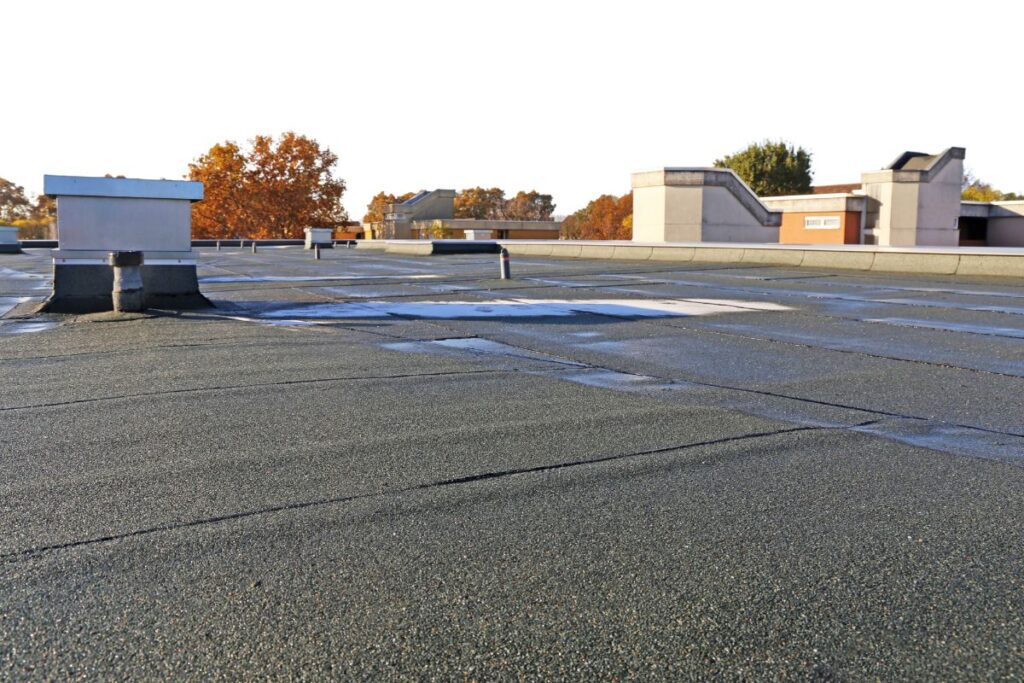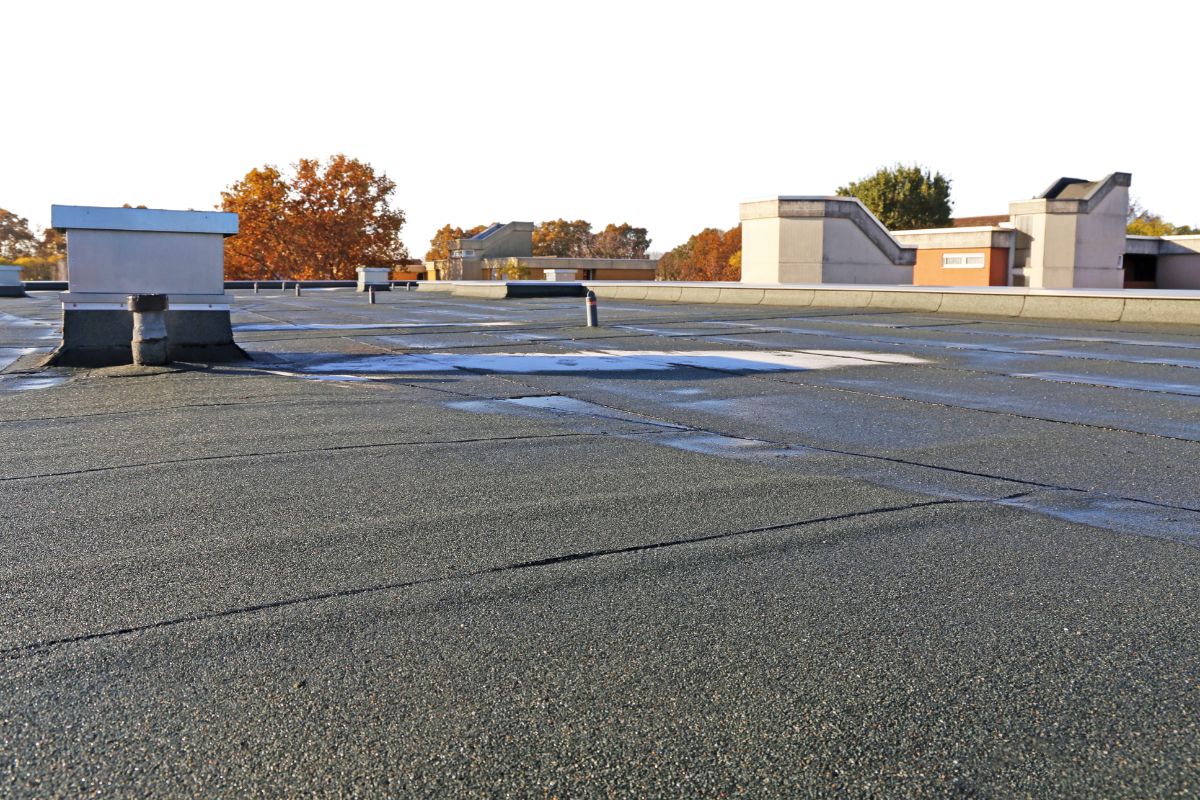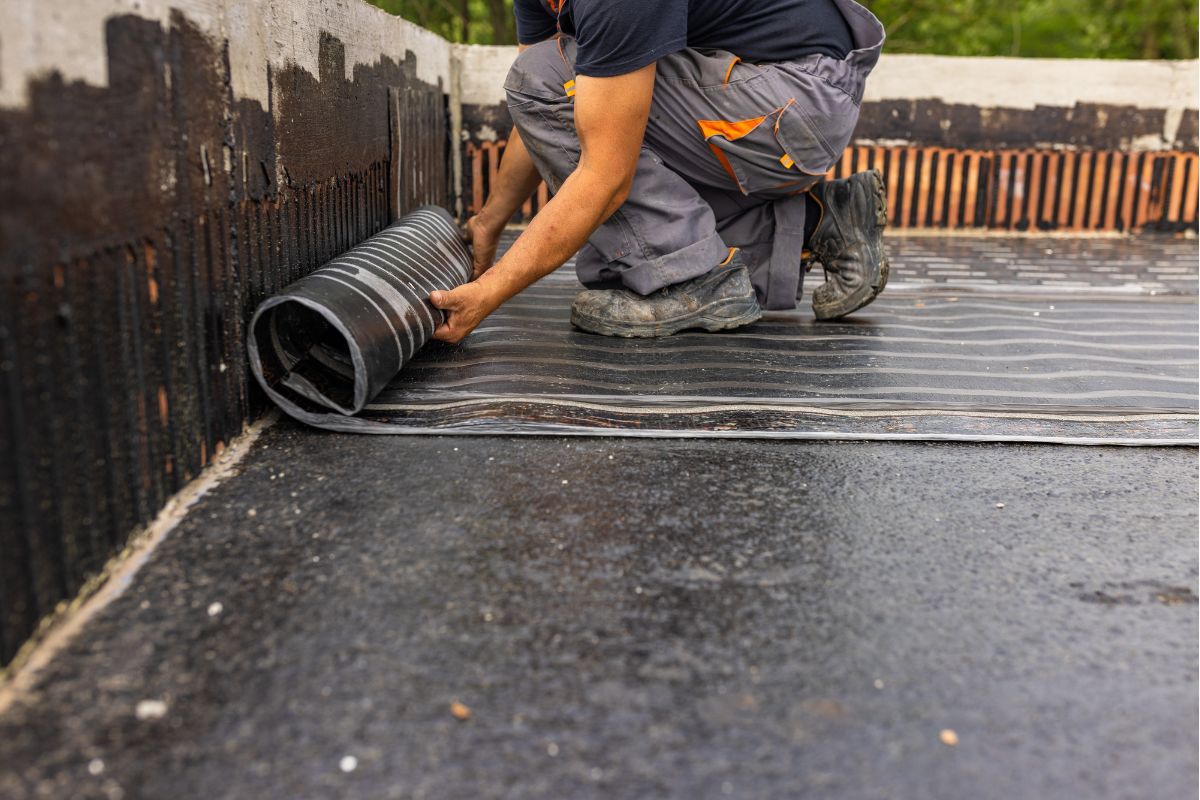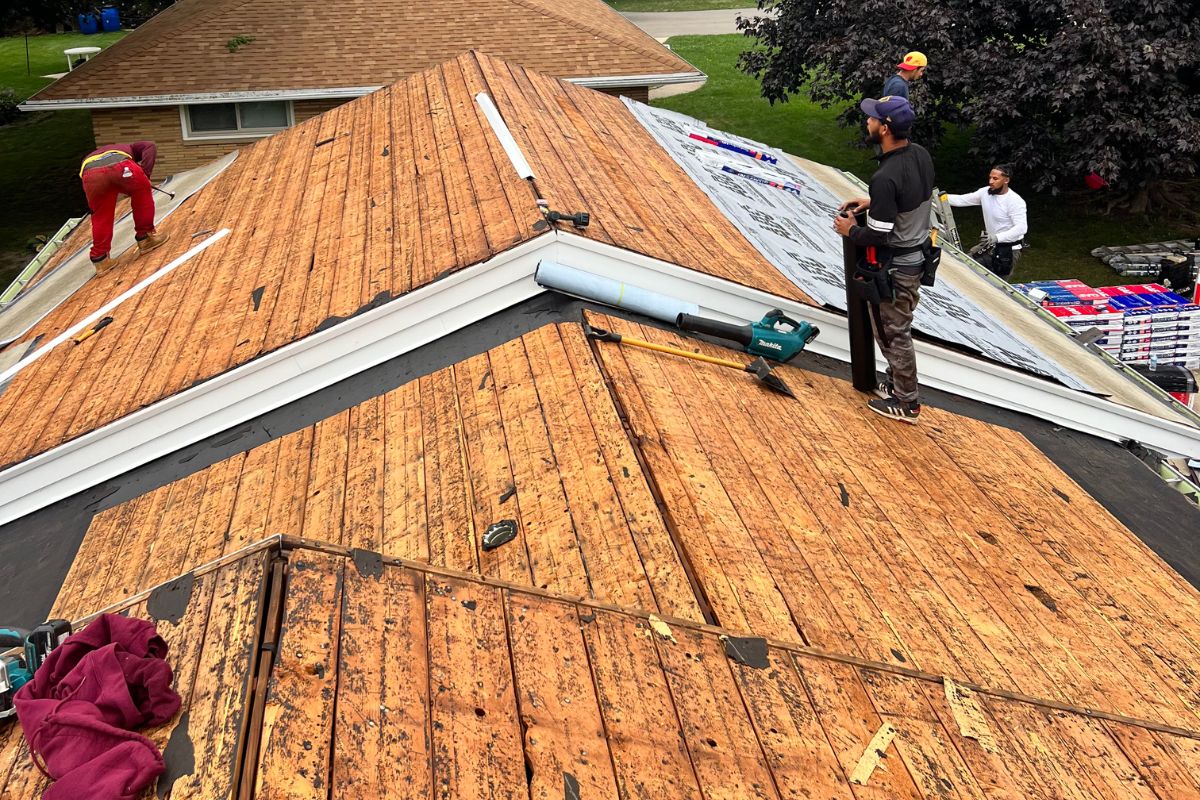Reviewed by Nicholas, Owner of Northern Generation Construction.
Flat roof pondings occur from an issue in the efficiency of the drainage system that causes water to pool. The problem can deteriorate into roof leaks, wear of the roofing materials, etc. The average cost of flat roof repairs from ponding water depends on the type of problem your roof has, as well as the roofing materials used.
We’ve handled hundreds of flat roof repair projects across Southeastern Wisconsin. Our founder, Nikolas, brings years of industry experience and holds certifications from GAF and TAMKO. As a licensed General Contractor and BBB-accredited business, we stand behind every repair with a commitment to durability and excellence.

Signs of Flat Roof Ponding That Require Repair
Standing water
See if the standing water on your roof surface lasts for 2 days or more; then it indicates that the roof requires repair.
Moisture buildup or water stains
Dampness in the air or water stains on the interior are clear signs of water infiltration.
Signs of damage
Conduct a roof inspection to check the roofing materials for cracks, wear, or blisters from water damage.
Ineffective drip edges
Finding debris in the drip edges or damage to the drainage components may cause water ponding.
Our project lead, Tyler, personally evaluates each repair case to provide accurate, honest pricing based on real project condition, not guesswork.
Average Cost to Repair Flat Roof Ponding
The average flat roof repair costs can vary vastly based on the scale of the damage, the type of roofing materials, and the labor.
Minor repairs
- Damaged Shingles: $200 – $700
- Leak: $400 – $2,500
Moderate repairs
- Sagging: $ 750 – $4,000
Severe or structural repairs
- Rot: $ 800 – $5,000
- Water Damage: $800 – $7,000
Key Cost Factors in Ponding Repair
Roof size
Larger roofs require more materials and labor costs. Size is the primary factor in determining the flat roof’s repair costs.
Roof access
Requiring complex paths or tools to reach the flat roof will increase the average labor of equipment required, increasing total cost.
Type of damage
The damage type directly affects the range of repair costs. While minor issues, such as leaks, are cheap to repair, major issues, such as structural damage, may require costly repairs and complex installation methods.
Drainage system design
The complexity of the drainage correction can impact the costs. The drainage systems include both the scuppers and drains.
Roofing materials used
The choice of materials has a large impact on the total cost. While premium materials increase repair costs, they also provide better flat roof health.
Labor rates
Foot in labor or labor prices can comprise nearly 50% of the total project, and is one of the major factors determining the total cost
Permit fees
Permit fees can range between $100-$500. These need to be in compliance with the building codes.
Budgeting for Repair: A Step-by-Step Guide
- Assess the Damage: Identify the type of damage.
- Estimate Repair Costs: by your roof size and the type of damage
- Calculate materials cost: consider the cost of your roofing material
- Include Labor: by accounting for the labor rates in your area.
- Factor in Permits: budget for permit fees for building codes as needed.
- Get Quotes: compare quotes from multiple required contractors before making a final choice.
Common Repair Methods for Flat Roof Ponding
Temporary Solutions
- Fixing Low Spot: Using sealants as a temporary measure doesn’t fix drainage issues.
- Recoating with Elastomeric Coating: a temporary solution to extend roof life. Doesn’t fix the drainage issue
- Patching with Flat Roof Sealants: a cost-effective solution for temporary patches.
Permanent Solutions
- Re-pitching the Roof: by using a tapered insulation system for drainage.
- Adding/Replacing Roof Drains: enhancing the drainage paths for better efficiency.
- Installing Tapered Insulation System: creates a proper slope with insulation.
- Roofing Membrane Replacement: repairs the damage permanently.
- Installing Crickest for drainage issues: enhances the drainage systems by using the drainage channels.
DIY vs Professional Repair Costs
DIY repairs are for minor issues such as patching a leak or fixing damaged shingles. Moderate or severe damage repairs require qualified roofers. Experienced roofers can conduct Professional repairs that can fully mitigate the damage done. Furthermore, tasks like repitching the roof and adding drainage components require flat roof specialists that can’t be done by DIY repairs.
Our certified roofing specialists have the training, tools, and safety knowledge needed to complete flat roof repairs properly the first time. You avoid costly errors and get lasting results.
Hidden expenses or Additional Cost
- Structural Reinforcement: requiring structural reinforcements or extensive repairs will increase the overall costs
- Drainage System Redesign: Adding to the drainage system will also require the membrane system to be changed accordingly, increasing the costs
- Insulation Upgrades: Removing old insulation will add to the total costs
- Permit and Inspection Fees: application fee, fee for plan review, and fees for routine inspections, as well as future inspectionsdepend on the work being done and can vary based on the nature of the project.
- Roofing Membrane Replacement: decking repairs add to the overall costs
How to Prevent Future Ponding
- Conduct Regular Inspections: Make long-term considerations and have experienced contractors inspect the roof every two years to find early signs
- Ensure Proper Slope: Make sure you install a proper slope of 1/4 inch per foot to make the drainage system efficient.
- Perform Fastidious Roof Cleaning: ensure minimal maintenance. Make sure that the roof and the drains are free from external debris that creates clogs
- Install or Upgrade Drains: ensure proper maintenance or upgrade the existing system to ensure that the drainage solutions are efficient.
- Consider a Green Flat Roof: you can install a green flat roof that will both absorb water and result in energy savings.
Cost Comparison: Ponding Repair vs Full Replacement
Roof repair is ideally the better and cost-effective option compared to flat roof replacement, when the damage done affects a small area, such as a 100 square foot area or only requires minor repairs, such as leak patching or shingle repair. Instead, if the damage done affects a significant portion of the roof and/or has done structural damage, it is better to do a complete replacement
| Cost Classification | Roof Repair Cost | Flat Roof Replacement Cost |
| National average cost | $900 | $21,054 |
| Average range | $400-$2,000 | $15,159 to $27,580 |
| Low-end | $200 | $7,271 |
| High-end | $16,000 | $79,931 |
We don’t just fix roofs, we build relationships through transparent work, skilled craftsmanship, and long-term value. Contact Northern Generations Construction today for a free quote and expert guidance.
Our Roofing Blog & Pro-Tips
How to check for roof leaks
Signs Of A Roof Leak In The Attic
How to fix loose roof shingles
Residential roof inspection
house roof inspection
Apartment roof inspection
Hail Damage Roof Repair
Hail Damage Roof Replacement
How much hail damage for insurance cover to replace a roof








